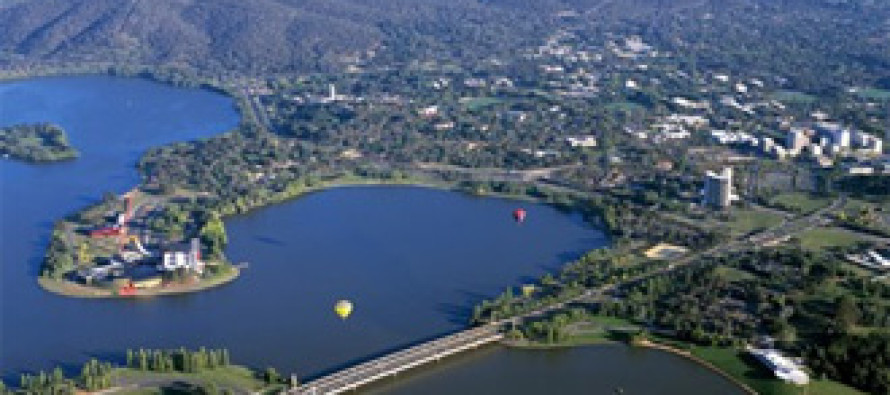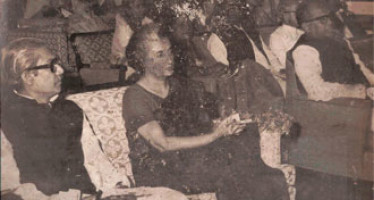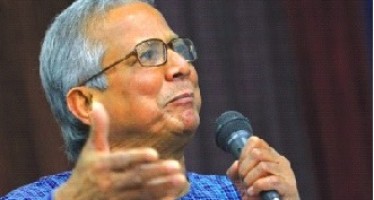21st Century “Kunta Kinte”! Chapter 7: Turning point!

21st Century “Kunta Kinte”!
Introduction: Revealing the “untold”! | Chapter 1: The realisation! | Chapter 2 : The beginning! | Chapter 3: The dream! | Chapter 4: The flash Back (part one) | Chapter 5: The flash back! (part two) | Chapter 6: Back to reality!
Chapter 7: Turning point!
Three weeks ago, in a Canberra social gathering, one of my friends, another senior official working with statistical facts and figures at the highest level of Australian Government had expressed his concerns about my “theory of conspiracy”. Again I have not argued with him as he obviously had different experience as a migrant than me. He had strong points and I had to agree they were valid points from his own perspective and I had to respect that.
However, when I continued my research on migration and its link to slavery, it was very interesting for me to find that I am not alone!
Rhonda V. Magee of the University of San Francisco in her article “Slavery as Immigration?” argues that transatlantic slavery was, in significant part, an immigration system of a particularly pernicious sort — a system of immigration aimed at fulfilling the budding country’s needs for a controllable labour population, and desire for a racialised one. As such, the law and policy of chattel slavery should be viewed as perhaps the most important historical precursor to contemporary immigration law regarding low and unskilled labour in the United States.
Following an analysis of the treatment of chattel slavery in general immigration history scholarship, and in scholarship on the history of immigration law, the author concludes that immigration law texts must include a discussion of chattel slavery that properly locates that system as a forerunner of modern immigration law and policy, and immigration scholars should devote more attention to chattel slavery.
The United States experienced major waves of immigration during the colonial era from the 1880s to 1920. Many immigrants came to America seeking greater economic opportunity, while some, such as the Pilgrims in the early 1600s, arrived in search of religious freedom. From the 17th to 19th centuries, hundreds of thousands of African slaves came to America against their will.
The first significant federal legislation restricting immigration was the 1882 Chinese Exclusion Act. Individual states regulated immigration prior to the 1892 opening of Ellis Island, the country’s first federal immigration station. New laws in 1965 ended the quota system that favored European immigrants, and today, the majority of the country’s immigrant’s hail from Asia and Latin America.
The Southern Poverty Law Center, USA – a non-profit civil rights organisation dedicated to fighting hate and bigotry, and to seeking justice for the most vulnerable members of our society including disadvantaged immigrants.
According to them,
“Immigrants perform some of the hardest, most dangerous jobs in our economy – for the least amount of pay. But they are routinely cheated out of their wages and denied basic protections in the workplace. In their communities, they are subjected to racial profiling and harassment by law enforcement – and frequently forced to prove themselves innocent of immigration violations, regardless of their legal status. And they are, increasingly, targeted for violent hate crimes.”
The Southern Poverty Law Center took on cases that few private lawyers would accept, seeking systemic reforms and representing victims of injustice, like these:
• Migrant workers who went months without being paid while cleaning up and rebuilding New Orleans after Hurricane Katrina.
• Welders and pipefitters from India who each paid up to $10,000 for jobs in Gulf Coast shipyards after being told falsely they would gain permanent U.S. residency – only to discover they would be forced into guarded labour camps.
• A migrant bean picker who saw his life savings confiscated by police during a traffic stop in Alabama, even though he was never charged with a crime.
• Farmworkers who were routinely cheated out of their pay by a subsidiary of one of America’s largest and best-known food companies.
This type of exploitation is experienced by immigrants and migrant workers every day as they strive for opportunity in a country that welcomes their cheap labour but recoils at their presence and fails to protect their rights.
Solomon Gifford in his article “LEGAL Immigration – A Tool for Modern Day Slavery” (Friday, November 4, 2011), has stated:
“When NumbersUSA aired the “Lower LEGAL Immigration” ad during two recent GOP national debates, a number of individuals posted comments on Twitter in disbelief that any organization would advocate lower legal immigration levels. Amnesty is the only form of LEGAL immigration that some are willing to stand against. However, just because something is legal doesn’t make it morally right. For example, if the African Slave trade were still in operation today, I would stand against it.”
He also mentioned that some legal immigration is an ingredient for replacing hard working Americans with modern day immigrant “slaves.”
OregonLive reported that the Department of Labour found that Oregonian forestry contractors who had received federal stimulus funds used the money to hire foreign workers. The contractors used some loopholes within the H-2B (low-skill temporary work visa) program to avoid hiring U.S. workers to hire cheap foreign workers instead.
In another USA incident, 48 legal immigrant workers from the Phillippines, Jamaica, Bellarus, Turkey, and Indonesia have filed a class action complaint in Mississippi alleging human trafficking violations under the Trafficking Victims Protection Act.
The immigrant workers could not afford to pay some of the relevant fees, so they were sent to specific loan companies in their country of origin where they were required to sign blank checks to pay back the money loaned once it was earned in the United States as well as requiring family members to co-sign the loan agreements so the loan companies would have someone to lean on in their country of origin if they could pay the loans backs.
Plaintiff’s Counsel Nick Norris stated,
“From the evidence we have seen so far we believe this is a case of modern day slavery where immigrant workers are being tricked into working in substandard conditions they did not agree to when they left their home countries, and are stuck working these jobs because they have to pay back these loans for visa expenses for their families and can’t go work for other employers in the United States under H2B visa program.”
I still believe that there is a conspiracy theory linked to the very existence of the immigration policy initiated by the developed world!
If it’s intention is so ‘noble’ then why are we restricting people’s movement between countries, why are we tying ourselves with a ‘country tag’, why are we putting lines on land or oceans to ‘legalise’ our own country! Restricting parts of mankind from sharing our resources and prosperity through a ‘legal’ policy framework!
Why aren’t ‘they’ allowing us to become world citizen – global citizen (which we are already through the development in the IT sector, if we are lucky to afford it) – like John Lennon’s dream:
“Imagine there’s no countries
It isn’t hard to do
Nothing to kill or die for
And no religion too
Imagine all the people living life in peace”
While continuing my further research into the matter, I would still like to share my personal journey as a migrant with a bright possibility of re-settling in Canberra, the heart of the nation.
1998, I am entering to a room with unknown audiences for an interview. I have been short listed for a position with the ACT Chief Minister’s Department. ACT stands for Australian Capital Territory and Canberra is the city centre working as the capital city for the Australian national capital. ACT works like a ‘mega’ local government with both responsibilities as a territory level government and also as a local government with all the municipal services. This is an unique role in Australia that the ACT plays.
Nigar and I always had an extra fascination about Canberra being the only planned city in Australia. 1913, when a husband and wife Architect team won the international design competition, it was a historic milestone for all Architectural schools across the world. We had to study planning of Canberra and some of the iconic buildings in Canberra when we were students of Architecture in Bangladesh. The Y-Plan, the High Court building, National Art Gallery, War Memorial were very familiar to us even before coming to Australia as a migrant.
I entered into the room. I saw two male with very dark black suit and a female with a nice dress sitting on one side of a big table. Another person is sitting in another table to record the interview. It seemed like, I was a ‘bolir patha’ and very soon they will cut me into pieces and have a festive meal!
I was happy to see at least one familiar face, the person who encouraged me to apply for the job Mr Peter Brady, a senior manager with the ACT Chief Minister’s Department. But I did not have any idea about the ‘real’ Peter Brady!
The first ‘bullet’ came towards me as the question, why do I like to move to Canberra when the usual trend is other way round. People do ‘scape’ from Canberra to Melbourne or Sydney!
This was followed by a series of other questions.
By now, I have passed the ‘nervous’ phase and ready to face any ‘bullets’!
I answered every question and eventually the interview turned into a group discussion session on planning, architecture, socio-economic status and migrant labour force particularly their attraction to Melbourne and Sydney.
I went back to Melbourne with a feeling of satisfaction as I did not miss any answer. It was a good interview!
One week later, I was informed that I am their preferred candidate and they would like me to join as soon as possible. I broke the news to Nigar but still haven’t discussed this opportunity with my current boss in Melbourne.
Both of us were now very confused!
Yes, there was a bit of career progression for me with a higher position but loosing Nigar’s job would ended us having less income with two daughter’s. We discussed the issue over and over again. Many sleepless nights with only one agenda, what to do? We listed the advantages and disadvantages in relation to our prospective decision.
Meanwhile I have informed ACT Government that it may take a while for me to take any concrete decision. Interestingly they agreed and allowed me few more months to make a decision.
By now, Kishoree, our older daughter was old enough to comment on family decisions. She opposed the move very strongly within her capacity to influence the family decision. Nigar was not fully in favour of the move.
More sleepless night, more anxiety, more discussions, more time passed away!
Finally, we came to a decision. We agreed that I would only accept the position if Nigar gets a job in Canberra at the same time.
What an ‘impossible’ dream!
But as I said in my previous chapters – you have to dream, as dream is the vehicle to take you to your destination.
I was desperate again to find a job for Nigar as I wanted to join the ACT Public Service. Watching me trying so hard, Nigar initiated some contacts with the National Capital Authority (NCA), former Planning and Land Management (PALM) and few other places.
September 1998, Nigar got few positive responses. Anabell Pegrum from NCA and Lincoln Hawkins from PALM agreed to meet with her in Canberra to discuss opportunities.
My first response to ACT Government – I would like to visit Canberra and see the work place, meet some of my prospective colleagues and to negotiate some finer points in September prior committing to such a huge move. They have agreed and we came to Canberra in September 1998 for a visit and few meetings for Nigar.
We already had/have few very nice friends in Canberra and we usually stayed at their house. Ehsan vai and Khuku vabi were on the top of the list with their excellent friendship and hospitality. We always stayed with them even when we came to visit Canberra with our parents in the early 1990’s.
This time, since we haven’t shared the news with anyone yet, we stayed in a hotel in Canberra city. But, we informed them about our visit to Canberra. Obviously we visited them lots of times and stayed with them the night before leaving Canberra. The nights were never long enough to complete our ‘adda’ with Ehsan vai and Khuku vabi as our relationship went back to our AIT days in Bangkok in late 1980’s. We look forward to visit Canberra for these ‘adda’ sessions. It was always like a never ending ‘fairy tale adda’!
September 22 1998, the day we arrived in Canberra. I went to see the officials at the Chief Minister’s Department. My work/negotiations were done by lunch time. Nigar’s appointment with NCA and PALM was in the afternoon.
I drove her to NCA, she had a very positive meeting with NCA without any immediate tangible outcome. I drove her to PALM – bad news, Lincoln Hawkins had to apologise as he had to go out for another urgent meeting. But he has referred Nigar to his Deputy Ms Elizabeth Clark to discuss prospective opportunities.
I believe, everything happens for a reason. Missing meeting with Lincoln and having Liz Clark instead, was blessing for Nigar. Liz was unable to offer any opportunity but she referred Nigar to one of her friends Ms Judith Bedford, who was heading up the Strategic Planning area of Queanbeyan City Council.
Judith wanted to see Nigar the next day.
Ooops!
We have promised Ehsan vai and Khuku vabi to stay at their house tonight and planned to leave from there tomorrow morning. We still haven’t told them the purpose of our visit!
We took a decision to share the news with them as they were/are always our ‘Shuvakangkhi’.
We shared the news with them at night. Khuku vabi was over the moon and got really excited about the prospect of us moving to Canberra. We had several visits to Canberra and they went once to visit us in Melbourne but this seemed like a special visit with special news. I still remember, to mark the occasion Khuku vabi cooked her famous “chomchom’ for the first time in her life. It was a very welcoming feeling for us.
Next morning, I drove Nigar to Queanbeyan City Council through Lanyon drive. Believe it or not, it seemed like we were driving to a remote city with dense ‘forest’ on both sides and a very narrow Lanyon drive. Finally, we arrived at the City Council office in Crawford street.
Nigar went inside the building and came back with an uncertain smile after one hour. According to her, Judith was a very nice motherly person, shared all her concerns and offered her to sit for a formal interview on the next day.
Ooops again!
We were leaving tomorrow and I haven’t got my leave for the day after.
Nigar raised this with Judith and she had agreed to take a telephone interview on the following day.
I had the feeling that something was working very positively. Was there a positive wind pushing us towards Canberra?
Next day, we returned to Melbourne and Nigar took some preparation for her interview on the following day.
Telephone interview is always annoying to me! You can’t express yourself fully, you can’t see the body language of the interviewers etc etc. But Nigar was extra comfortable with telephone interview. She had all her notes in front of her and ready for the interview.
The interview went extremely well and surprise surprise they offered Nigar the job on the following day!
Miracles happen!
We were again sharing another miracle after our scholarships to Thailand. I realised, nothing can stop us now from moving to Canberra.
We had more extensive discussion sessions among us. More sleepless nights!
Finally we decided to look it from a positive perspective. I have informed my work in Melbourne about my opportunity in Canberra. Nigar informed Melbourne City Council about her job offer in Queanbeyan. But the toughest challenge was to inform our friends in Melbourne.
After almost 10 years in Melbourne, I do not think any of them believed in the first instance. None of them were ready to confront with such news. Everyone was shocked – but it was a great feeling for us, we felt loved!
I negotiated a time with the ACT Government to join on 1 November 1998 and Nigar negotiated December 1998.
All our flights and relevant expenses were provided by the ACT Government. We were also provided with a four weeks accommodation in Griffin Apartment in Kingston.
October 30 1998, Melbourne domestic airport very rarely have seen such a scene. Some of our friends including Shahid vai and Swatee vabi and their daughter Adrita came to see us off. It was a water fall of “osru”! I have never experienced such a ‘reedoy bidarok’ departure.
Everyone was crying (except me)!
We were not dying or departing for ever – we are only moving out of Melbourne to start a new life in Canberra!
Like any other traditional Bangali ‘bidaaey’, we lost the track of our time. We realised that by now the whole Melbourne airport is talking about our departure and knew our names as QANTAS was announcing our names as missing passengers. They were requesting us to board immediately as the flight was about to leave.
We turned the tap of ‘osru’ off and proceed towards the Aerobridge.
It was probably one of the longest one hour flights in my life. I did not realise that Canberra was ‘so far’! The Melbourne landscape was gradually vanishing from my eye sight, Melbourne was trying to find places in my memory book, Melbourne was probably requesting me not to forget the time we had in Melbourne as our first Australian home.
We arrived at Canberra airport just before dusk. Canberra airport, ‘a building like no other’ – I do not think, I have seen such an un-impressive airport building at any other national capital in the world!
However, no one was waiting for us to arrive; no one was there to receive us!
Just four of us, first generation migrant couple and two daughters with a huge challenge ahead of us.
Most of our heavy furniture, luggage were transported through a removalist organised by the ACT Government.
With four suitcases and a pram for Auditya, we hired a taxi to take us to the Griffin apartment. It was a similar feeling like when we arrived in Melbourne in 1989 as new migrant!
New town, new air, new sky, new road, new trees, new landscape – just the old family of four!
We checked in. None of us were energetic enough to unpack the suitcases after a month of packing, selecting and deselecting things across the Melbourne house. We were very tired. The only energetic person was Auditya – she was really enjoying the new change without realising that we have moved to Canberra for good!
Nigar and I looked at each other and asked the question – did we do the right thing? What are we doing here in an apartment in Canberra without any support, family and friends? We did not realise the harshness of reality – it was like an isolated ‘bonobash’ again.
I do not remember, how long we were sitting like that as Nigar was constantly crying and I did not have any consolation for her. It was again a conscious decision taken by both of us – particularly influenced by my input (I am probably still like that!)
It was 7pm. There was a phone call from downstairs reception that we have a visitor.
We were surprised and wanted to know who the visitor’s were!
It was a gentle knock on the door that helped us to organise our acts and I went to open the door.
I was opening the door very quietly as I was keen to see the visitor’s face. I look through the eye hole on the door. I wasn’t surprised at all.
The faces I have seen through the eye hole were very familiar and very friendly.
Who said, we didn’t have any friends in Canberra. I said in the paragraph above! I withdraw my statement!
The presence of these two people was a signage of their true feelings for us. Their presence in such a vulnerable moment was so effective for us to accept reality. Their caring and sharing moments will be treasured in our memory for rest of our life.
I welcomed them into the apartment. I believe, it was one of the happiest moments for Nigar in Canberra after seeing those smiling welcoming faces.
They were the first visitor to our Canberra home. The visit turned more sensitive and touchy when they brought out plastic containers full of food items for us to have dinner. Our first evening in Canberra – first dinner in our house in Canberra, cooked by our friend. I have to accept, by that stage we were so grateful to our first visitors as we were not in a mood to cook on our first night!
As if, they were sent by god to provide us with comfort, assurance and dinner!
(to be continued in August)
Related Articles
ঐতিহাসিক ১৬ই ডিসেম্বর ২০০৯ , মহান বিজয় দিবস
ঐতিহাসিক ১৬ই ডিসেম্বর ২০০৯ , মহান বিজয় দিবস । বাংলাদেশ নামক রাষ্ট্রটির অর্ভ্যূদয় । ১৯৭১ সালের এই দিনে জাতি লাভ
Dr Yunus: The One Who Can Change the World
Business is usually portrayed as a means to make money. However, this does not mean that businesses are filthy, money-generating






